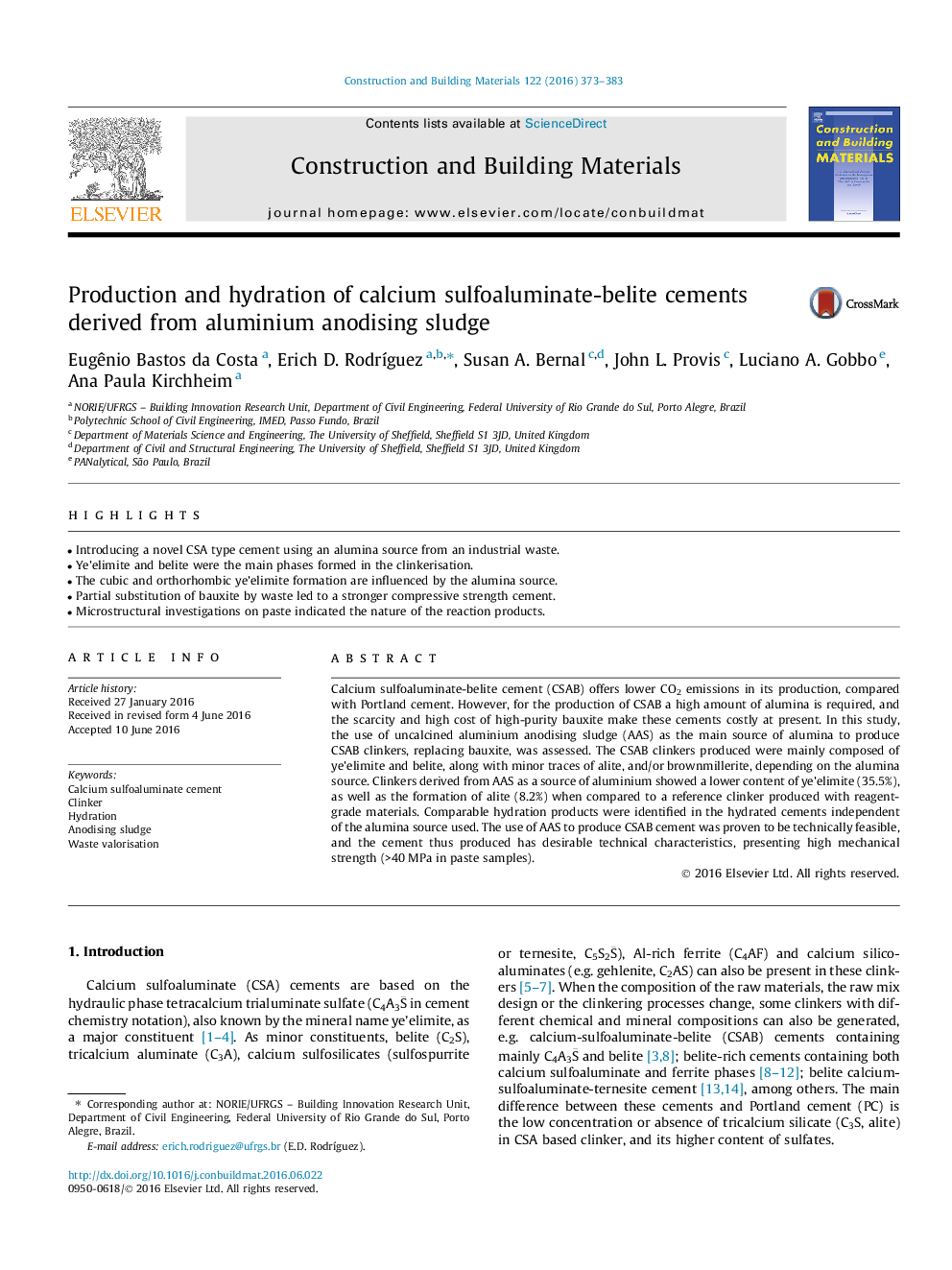| Article ID | Journal | Published Year | Pages | File Type |
|---|---|---|---|---|
| 6718094 | Construction and Building Materials | 2016 | 11 Pages |
Abstract
Calcium sulfoaluminate-belite cement (CSAB) offers lower CO2 emissions in its production, compared with Portland cement. However, for the production of CSAB a high amount of alumina is required, and the scarcity and high cost of high-purity bauxite make these cements costly at present. In this study, the use of uncalcined aluminium anodising sludge (AAS) as the main source of alumina to produce CSAB clinkers, replacing bauxite, was assessed. The CSAB clinkers produced were mainly composed of ye'elimite and belite, along with minor traces of alite, and/or brownmillerite, depending on the alumina source. Clinkers derived from AAS as a source of aluminium showed a lower content of ye'elimite (35.5%), as well as the formation of alite (8.2%) when compared to a reference clinker produced with reagent-grade materials. Comparable hydration products were identified in the hydrated cements independent of the alumina source used. The use of AAS to produce CSAB cement was proven to be technically feasible, and the cement thus produced has desirable technical characteristics, presenting high mechanical strength (>40Â MPa in paste samples).
Related Topics
Physical Sciences and Engineering
Engineering
Civil and Structural Engineering
Authors
Eugênio Bastos da Costa, Erich D. RodrÃguez, Susan A. Bernal, John L. Provis, Luciano A. Gobbo, Ana Paula Kirchheim,
